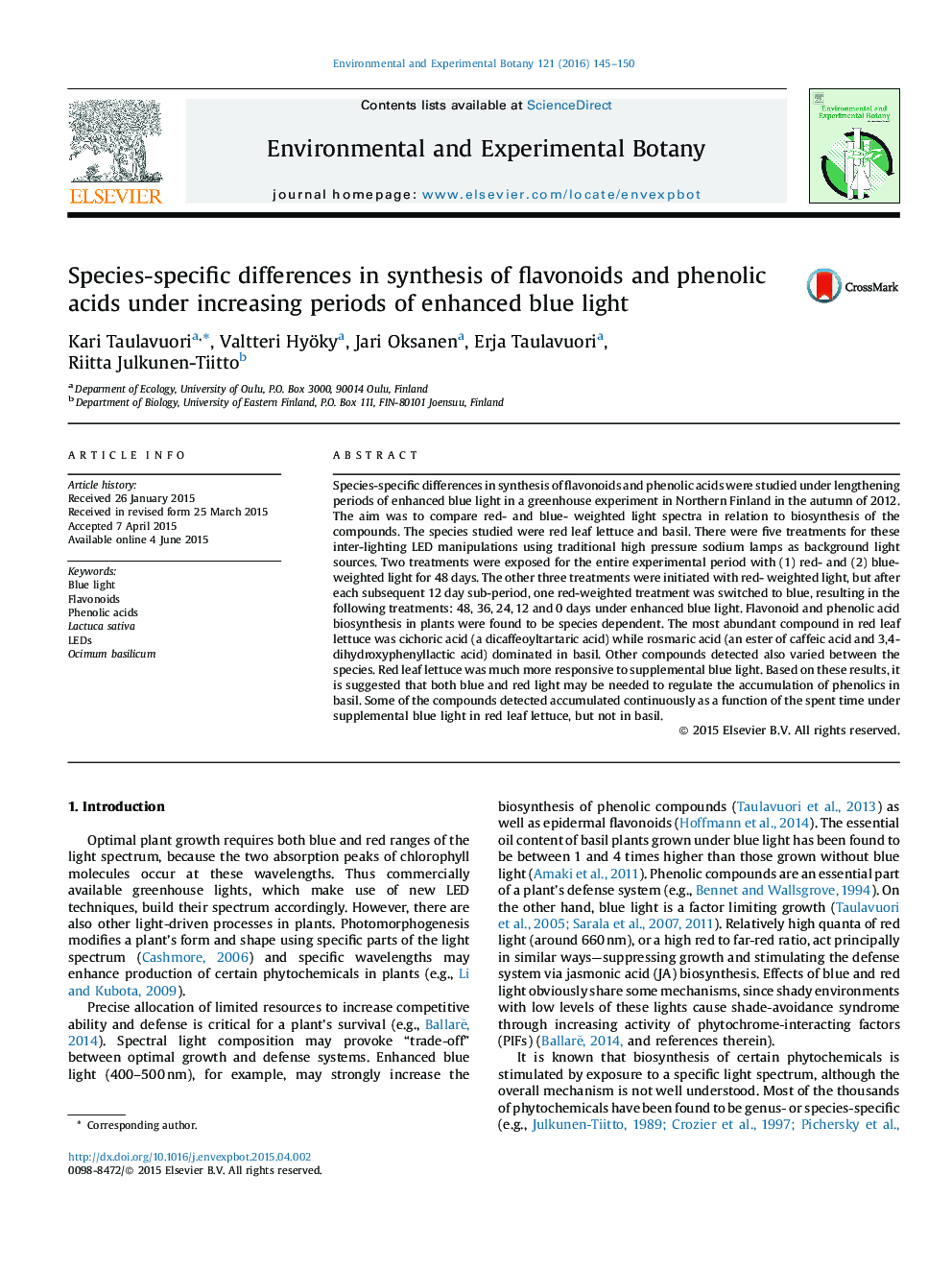| کد مقاله | کد نشریه | سال انتشار | مقاله انگلیسی | نسخه تمام متن |
|---|---|---|---|---|
| 4554116 | 1628056 | 2016 | 6 صفحه PDF | دانلود رایگان |
• Blue light boosted productions of many flavonoid and phenolic acid compounds.
• In some cases this occurred as a function of lengthening period of blue exposure.
• The response was species-specific: there were not marked difference in basil in response to supplemental blue or red light.
Species-specific differences in synthesis of flavonoids and phenolic acids were studied under lengthening periods of enhanced blue light in a greenhouse experiment in Northern Finland in the autumn of 2012. The aim was to compare red- and blue- weighted light spectra in relation to biosynthesis of the compounds. The species studied were red leaf lettuce and basil. There were five treatments for these inter-lighting LED manipulations using traditional high pressure sodium lamps as background light sources. Two treatments were exposed for the entire experimental period with (1) red- and (2) blue- weighted light for 48 days. The other three treatments were initiated with red- weighted light, but after each subsequent 12 day sub-period, one red-weighted treatment was switched to blue, resulting in the following treatments: 48, 36, 24, 12 and 0 days under enhanced blue light. Flavonoid and phenolic acid biosynthesis in plants were found to be species dependent. The most abundant compound in red leaf lettuce was cichoric acid (a dicaffeoyltartaric acid) while rosmaric acid (an ester of caffeic acid and 3,4-dihydroxyphenyllactic acid) dominated in basil. Other compounds detected also varied between the species. Red leaf lettuce was much more responsive to supplemental blue light. Based on these results, it is suggested that both blue and red light may be needed to regulate the accumulation of phenolics in basil. Some of the compounds detected accumulated continuously as a function of the spent time under supplemental blue light in red leaf lettuce, but not in basil.
Journal: Environmental and Experimental Botany - Volume 121, January 2016, Pages 145–150
